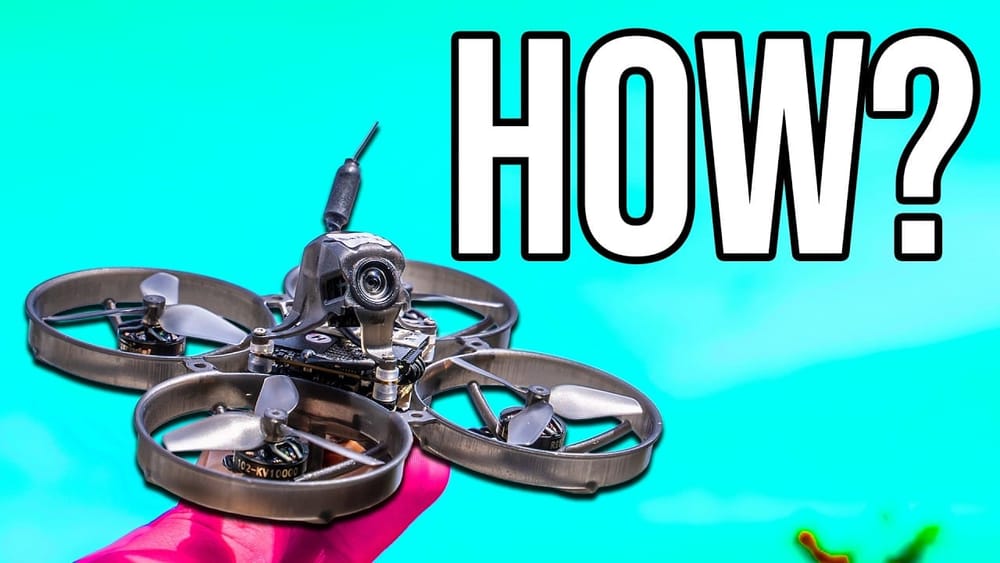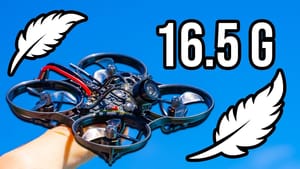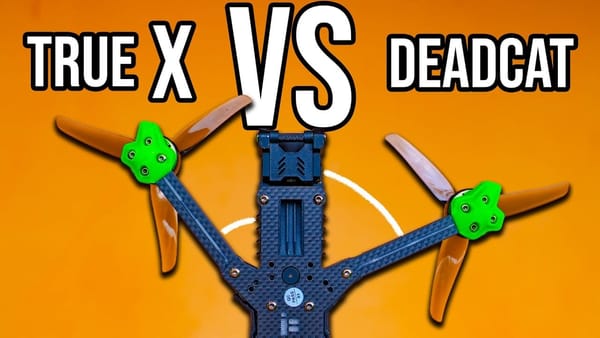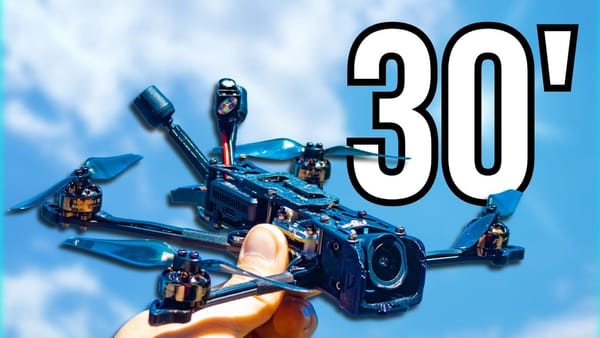
The Happymodel Mobula7 arrives as a 2S micro DJI O4 Lite FPV drone designed for tight-space freestyle flying. Rimzler puts it through its paces to see if it lives up to the hype or just adds to the long list of "almost there" O4 Lite disappointments.

TL;DR
The Mobula7 impresses with build quality, efficiency, and quiet operation, but its fixed camera angle and inconsistent flight tuning hold it back. It’s one of the better O4 Lite drones tested, yet still falls short of perfection due to unpredictable PID behaviour and control quirks.

What You Get in the Box
The package includes stickers, an accessory bag with a Phillips screwdriver and a propeller removal tool, a spare canopy, and an extra set of HQ 18x10x45mm tri-blade propellers with mounting screws. The drone itself comes with its canopy, but notably, the version tested lacks the O4 Pro camera system, instead featuring the O4 Lite setup.
The O4 Lite connector is soldered directly to the flight controller, and unlike some competitors, Happymodel doesn't provide a short cable for it. Rimzler had to source a very short cable and add his own grommets to keep the drone’s weight down to a respectable 37 grams. The drone feels springy and resilient, built to endure the usual backyard crashes.

Hardware Rundown
The Mobula7 sports 1102 10,000 KV motors and a 1-2S compatible flight controller with 12A ESCs flashed with Bluejay firmware. It integrates a non-SPI Espresso RS 2.4 GHz receiver with a copper wire antenna. Battery space is tight, supporting 2S batteries from 450mAh to 550mAh.
One disappointment is the fixed camera angle—roughly 15 to 20 degrees—which can't be adjusted. This limits flying style versatility, especially for indoor or slow-speed flights where a lower angle provides better control and visibility.

Flight Testing: Battery Matters
Rimzler tested three batteries: 450mAh, 530mAh, and 550mAh, all 2S. The 450mAh battery proved too light for the drone’s tuning. It caused the PID loop to overshoot, resulting in twitchy and imprecise controls. The Mobula7 was prone to throttle surges even at zero throttle, and flying was generally unstable and frustrating in windy conditions.
With the 450mAh pack, the drone exhibited a slight wobble in the camera feed but no severe jello—impressive given the lack of soft mounting. The canopy and frame held up well, but the flight performance was underwhelming.

Improved Flight with Larger Batteries
Switching to the 530mAh battery improved the flight experience noticeably. The drone sounded cleaner and felt more stable, though it still wasn’t perfectly tuned. The PID loop oscillations persisted but were less pronounced. Rimzler calls it “one of the best flying Tiny Whoops with the O4 Lite” he has seen so far, but that’s faint praise given the overall O4 Lite drone market.
The 550mAh battery didn’t significantly change the flight characteristics. The drone still exhibited some unpredictable behaviour, including sudden yawing without pilot input, reminiscent of early BetaFPV drones struggling with tuning.

Flight Characteristics and Limitations
The Mobula7 is efficient—Rimzler flew for over five minutes with the 530mAh battery and suggests it could last seven minutes if flown conservatively. It’s silent and resilient, but the fixed camera angle forces pilots to cruise faster to maintain horizon visibility, which isn’t ideal for tight indoor flying or precise manoeuvres.
The drone lacks inertia, making quick manoeuvres jerky. The PID tuning is only 70-80% reliable, with occasional erratic movements that could lead to crashes. This inconsistency is frustrating, especially for pilots expecting a plug-and-play experience.
Wind worsens the drone’s instability. Rimzler notes it’s best suited for indoor or calm outdoor conditions, where its discrete size and quiet operation really shine.

How Does It Compare?
Compared to other O4 Lite drones, the Mobula7 is better than the usual underpowered, 200-series drones like the iFly 21 or the One S. It flies more efficiently and with less vibration, though it still shares the common curse of O4 Lite drones: no perfect model exists.
Rimzler speculates the narrow camera lens might amplify perceived wobble, unlike wider-angle O4 Pro cameras which handle vibrations better due to heavier builds. The Mobula7's cinewhoop frame offers more protection for indoor flying than open-frame designs like the Flybee.
Final Thoughts: A Six-and-a-Half Out of Ten
The Mobula7 is one of the best O4 Lite drones Rimzler has tested but still only earns a 6.5/10. It deserves higher marks if the tuning were refined and the camera angle adjustable. Its efficiency, quiet operation, and build quality are strong points.
However, unpredictable PID oscillations and jerky controls prevent it from being a truly reliable and fun drone. For backyard or park flying on calm days, it’s a solid choice if you accept its quirks. For professionals or those seeking precision, it remains a compromise.
Manufacturers still have work to do to produce a flawless O4 Lite drone. Until then, pilots must weigh trade-offs between efficiency, flight quality, and camera options.
FAQ
Can the camera angle on the Mobula7 be adjusted?
No, the camera angle is fixed at about 15-20 degrees, which limits slow-speed and indoor flying capabilities.
What battery size works best with the Mobula7?
Batteries between 530mAh and 550mAh 2S give better flight stability and control. The 450mAh battery is too light and causes unstable PID behaviour.
Is the Mobula7 suitable for flying in windy conditions?
No, it struggles in wind due to its lightweight frame and tuning issues. Calm or indoor environments are recommended.
Does the Mobula7 produce a lot of vibration or jello in the video feed?
It has minimal jello despite lacking soft mounting, thanks to relatively good PID tuning compared to other O4 Lite drones.
How does the Mobula7 compare to other O4 Lite drones?
It’s generally better than older or underpowered models but still falls short of perfection due to tuning quirks and fixed camera angle.
Takeaways
- The Mobula7 is efficient and quiet but suffers from inconsistent PID tuning and fixed camera angle.
- Use 530mAh or 550mAh 2S batteries for best flight stability; 450mAh is too light.
- Best flown indoors or outdoors on calm days—wind exposes tuning weaknesses.
- Build quality and durability are excellent for a 37g cinewhoop frame.
- Still no perfect O4 Lite drone; expect trade-offs between performance and features.
This article was based from the video Finally a Good DJI O4 Lite FPV Drone? Happymodel Mobula7







